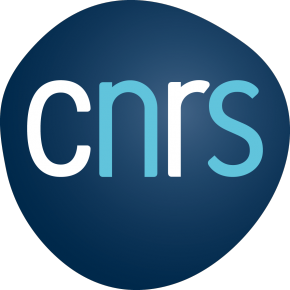




The LMPS - Laboratory of Mechanics Paris-Saclay - is a joint research unit of the University of Paris-Saclay, ENS Paris-Saclay, CentraleSupélec and the CNRS.
On January 1, 2022, the Paris-Saclay Mechanics Laboratory (LMPS) was created from the merger of the Mechanics and Technology Laboratory (LMT) and the Mechanics of Soils, Structures and Materials Laboratory (MSSMat). The merger of these two laboratories was all the more natural as they share scientific themes on all facets of solid mechanics: mechanics of materials and structures, civil engineering, fine experimentation and high-performance computing. With nearly 220 members (half permanent members and half doctoral and post-doctoral students), this new research unit, dedicated to experimentation, modelling, and simulation in solid mechanics, aims to contribute to meeting the challenges in the strategic areas of safe and efficient, clean energy development, resource management and adaptation to climate change, sustainable transport, and urban systems, reliability of complex systems and industrial renewal. To help overcome the associated scientific challenges, It develops both experimental observation and characterization methods, aims at formulating appropriate models for the physically identified mechanisms, and advanced computational methods and simulation codes able to handle these models efficiently.
Themes
The LMPS structures its activities and develops its resources around the following themes.
- Experimental mechanics, with the originality of multi-axial aspects, hybrid control, multi-modal 2D-3D-4D in situ field measurements, multiphysical and/or small-scale measurements and stresses, integrated approaches, chemical-mechanical ageing, dynamics.
- Mechanical behaviour and its couplings, magneto-electro-mechanical couplings, phase changes, meso-structured materials, non-linear behaviour, manufacturing processes, hydric/mechanical couplings, chemical/mechanical couplings, deferred deformations and ageing.
- Damage, instabilities and failure, mixed mode fatigue cracking, anisotropic damage, small scale cracking, gradient effect, surface integrity and fatigue life, hybrid micro-meso modelling of composite damage and scaling effects.
- Simulation and HPC, model reduction, domain decomposition, scale transitions, optimisation, dynamics and vibrations, dedicated wave propagation and medium frequency approaches.
- Verification and validation, probabilistic analyses, taking into account uncertainty, optimisation, data-driven control.
Application domains
- Safe and efficient clean energy
- Sustainable transport and urban systems
- Reliability of complex systems
- Industrial renewal
- Sober resource management
- Safe societies - protecting freedom and security.
Partnerships
These challenges are largely carried out in relation to the industrial world and organisations from the following sectors of activity: the environment, aeronautics, space, defence, transport, including the automobile, energy, including nuclear engineering, civil engineering, health
Industrial partners :
- Airbus, Ariane Group, CNES, Dassault Aviation, MBDA, Safran, Thalès
- Renault, Stellantis, Michelin, RATP, SNCF
- EDF, IRSN, IFP, Mitsubishi Electric, Orano, Saint-Gobain
- ArcelorMittal, Aperam, Tata Steel, Vallourec
- Bouygues construction, Ecocem, sixense, ANDRA, CEMENTYS, IREX
- Altair, Dassault Systèmes, EikoSim, ESI, SIEMENS
- Air Liquide, BIOMODEX, cetim, GE Healthcare, iXblue
Academic Partners:
CEA, DGA, INRIA, ISL, ONERA
Institut Farman, Fédération francilienne F2M-msp, Collège doctoral Franco-Allemand SNTA
ICMMO (Université Paris-Saclay), MATEIS (INSA Lyon), Centre des Matériaux et CEMEF (Mines Paris-Tech), LMS (Polytechnique), SPMS et LGPM (CentraleSupélec), ONERA (DMAS), KTH (Suède), Université de Zagreb (Croatie), UFSCar et USP (Brésil), Université Leibniz de Hanovre (Allemagne), Université Rome Sapienza et l’Aquila (Italie), Université Trondheim (Norvège), Université du Kansas (USA), Université de Talca (ECOS), Université de Sao Paolo, Università di Roma la Sapienza, Laser Institute of Shandong Academy of Science, Ecole Polytechnique de Montréal, MSME(U. Paris-Est Créteil / U. Paris- Est MLV), IJRLDA (Sorbonne U.), PIMM (ENSAM), GeM (EC Nantes/U. Nantes), LVTS et URB2i (U. Paris), G2ELab (U. Grenoble), CRPP (U. Bordeaux), LiPHY (UGA Grenoble)
More information
Download the 2023 laboratory report HERE
CONTACT
Director: Pierre-Alain Boucard
Deputy Director: Veronique Aubin




